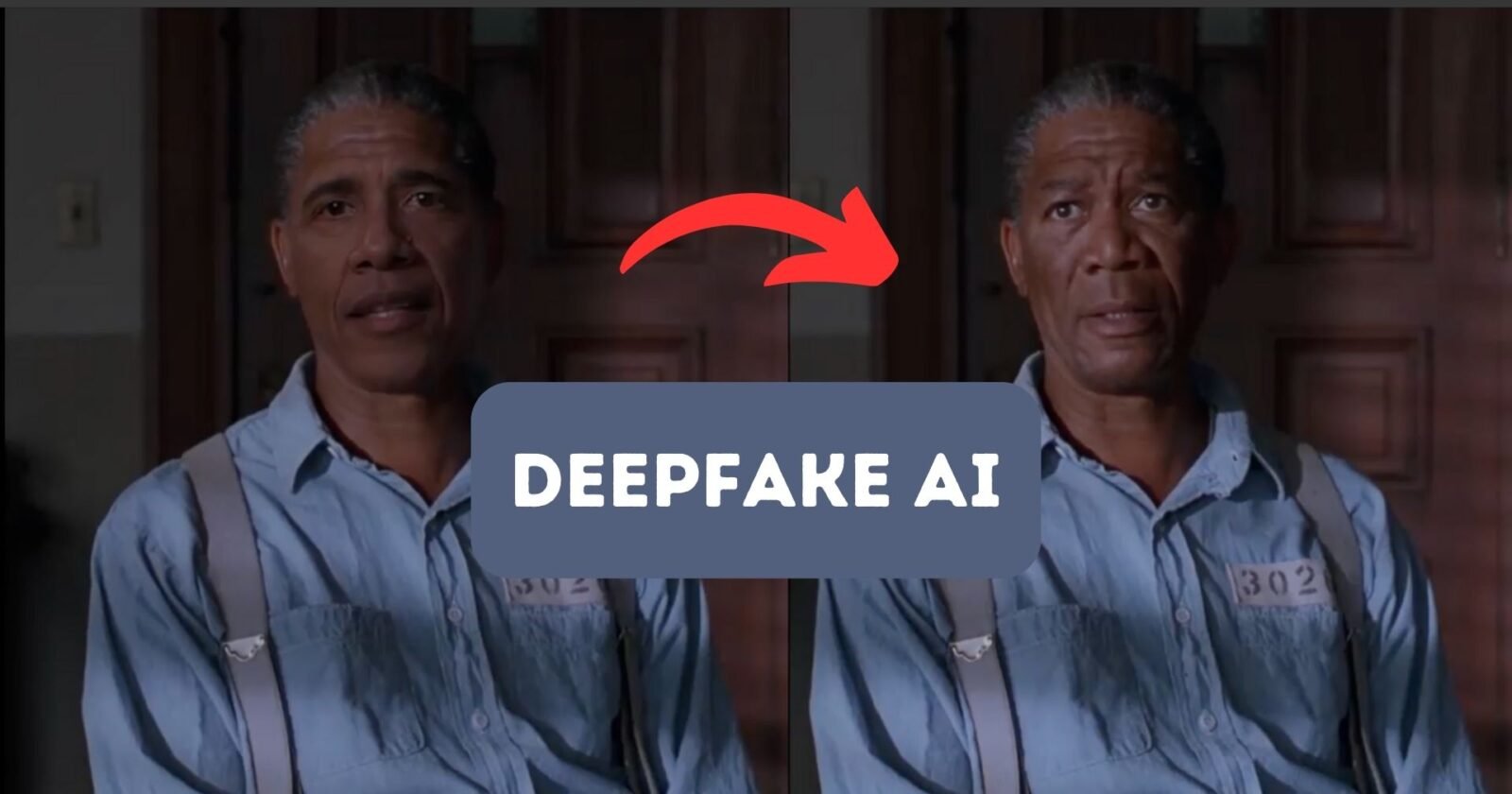Ever stumbled upon a clip where a celebrity seems to be doing or saying things they’ve never actually done? That’s the work of DeepFake AI, a technology that can alter faces and voices in videos and photos.
This technology is like a modern-day wizardry, created by combining computer skills and intelligent software. DeepFake AI, a blend of “deep learning” (a smart computer technique) and “fake,” is often used for entertainment in movies and games. However, it can also be misused to deceive people.
In this blog, we’ll dive into what DeepFake AI is, its uses, its exciting features, and address the big questions about its safety and ethical implications.
DeepFake AI Explained
DeepFake AI is a type of artificial intelligence that specializes in creating highly convincing fake visuals, sounds, and videos.
The word “deepfake” is a mix of “deep learning” (a branch of AI) and “fake,” and it’s commonly used to alter media by replacing one person’s face or voice with someone else’s. Originating from computer vision studies, this technology is now utilized in many areas, including entertainment and gaming.
Deepfakes are crafted using sophisticated tools like Generative Adversarial Networks (GAN), convolutional neural networks, autoencoders, and natural language processing.
They find applications in creative fields, spreading misinformation, meddling in politics, and even in fraud schemes. Despite the concerns about their misuse, deepfakes can be beneficial, especially in marketing and advertising.
How to Use DeepFake AI
By following below steps, you can use DeepFake AI to Face Swap Any Video
1. Preparing Your Files
To begin face swapping using AI, first, ensure you have the video file and the image of the person whose face you want to swap. Make sure the names of these files don’t contain any numbers, special characters, or spaces. This is important for the AI to process the files correctly.
2. Accessing the AI Tool
Visit Deepfake website. This step is crucial as it connects the tool to your computer, allowing you to upload and process your files.
3. Uploading Video and Image
Once you’ve accessed the tool, upload the video you want to face swap. Then, upload the photo of the person whose face you want to use. This can be done by clicking the upload icon and selecting the appropriate files. After uploading, both the video and the image will appear in the tool’s interface.
4. Running the Face Swap Process
Scroll down to the section of the tool where you can find the code for face swapping. You’ll need to add the video and image to this area.
Right-click on the video file, select ‘copy path’, and paste it into the designated area. Repeat this process for the image file. Once both paths are pasted, click to start the face swap process. This may take a few seconds to complete.
5. Downloading and Viewing the Result
After the process is complete, a new file named ‘swapped’ will be generated. Right-click on this file and select ‘download’ to save the video with the face swap to your PC.
When you open the downloaded file, you’ll see the video with the face swap applied. The same process can be used for swapping faces in pictures, ensuring you change the output format to JPG for images.
Key Characteristics of DeepFake AI
DeepFake AI encompasses several important features
- Exchanging Faces and Voices: This popular use involves swapping the faces and voices of two individuals.
- Generating Non-Existent Faces: This involves creating completely new faces. Altering Facial Features and Expressions: This allows for changes in specific facial characteristics or expressions.
- Uses Across Industries: Notably in entertainment, gaming, and customer support.
- User-Friendly: Deepfake technology is available via smartphone apps and computer software, making it widely accessible.
- Creation Process: Usually involves training a type of AI called a variational auto-encoder (VAE) on various facial images.
- Audio Alteration: Involves synthesizing voice patterns and tones to make convincing audio deepfakes.
The Safety of Using DeepFake AI
Navigating the safe use of DeepFake AI is tricky. While there are benefits, such as in entertainment or for personal amusement, deepfakes come with significant risks:
- Potential for Harmful Use: Deepfakes can serve purposes like blackmail, tarnishing reputations, disseminating lies, meddling in politics, and committing financial scams.
- Risk of Spreading False Information: Deepfakes pose a threat to democratic systems and can be a tool for spreading falsehoods.
- Challenges in Detection: As the technology evolves, distinguishing deepfakes from real content becomes increasingly difficult.
- Legal and Ethical Issues: Creating deepfakes isn’t inherently illegal, but they can lead to legal troubles in cases involving child abuse, slander, or hate speech. Laws directly addressing deepfakes are still quite scarce.
FAQs: DeepFake AI
-
What are some key characteristics of DeepFake AI?
DeepFake AI can exchange faces and voices, generate new faces, alter facial features, and has applications in entertainment and more.
-
How can one use DeepFake AI to swap faces in a video?
To swap faces in a video, prepare files, access an AI tool, upload video and image, run the face swap process, and download the result.
-
What are the safety concerns associated with DeepFake AI?
DeepFake AI poses risks such as spreading false information, challenges in detection, legal and ethical issues, and potential for harmful use.
-
How should DeepFake AI be approached responsibly?
DeepFake AI should be used responsibly, considering ethical boundaries and intent, to avoid causing harm or deceit.
Conclusion
DeepFake AI is a technology with two faces. On one hand, it brings excitement and creativity, offering unreal but believable experiences in films, games, and for a good laugh.
However, it also bears significant risks. It can be weaponized to create misleading news or deceive people, which is a serious concern. It’s crucial to approach DeepFake AI with a sense of responsibility and a clear understanding of ethical boundaries. The safety of using this tech hinges on the intent and manner of its application.
It’s a potent tool that must be wielded wisely to avoid causing harm or falling prey to deceit. It’s essential to remember: the ability to do something with technology doesn’t always mean it’s the right thing to do.









